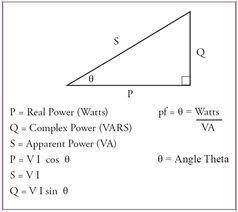I think it went pear shaped when the Maharaja posted this:OK. Then somewhere we went down the path of instantaneous power, average power, and time integrals. I guess I lost track of what point you were driving at.
Power is an instantaneous value which means that his statement is incorrect.It is not correct to say there is no time element in KW
Certainly we use average power in calculations and I take your point about better PF making more effective use of supply current carrying capacity.
As it happens, a discussion on power factor and cost savings is how I joined this forum about five years ago:
If you are not penalised for operating at low power factor, I'm not sure that installing PFC wil get you much benefit.
Sure, if installed at local MCCs, it would reduce losses in your distribution system. Correct to 0.95 and you could cut distribution loses by nearly 40%.
But 40% of what? Probably not a lot given that the distribution system (presumably) already exists and is rated for existing currents.
Transformer losses will also be reduced but again, this is not likely to a very great saving. In my experience, copper losses for the size of transformers you mention, is in the region of 1% of rating.
Bob makes a good point. Savings would be for I?R losses. System impedance is usually mostly reactive, so basing calculations on that would be a bit misleading. In the absence of any better information I usually take resistance to be 0.24 times the impedance.
In summary, I think for your particular application, it might be difficult to justify the capital cost of PFC based on energy savings alone.
Just my thoughts.
On a recent project, I included PFC on a fixed speed drive. It was a refurb and the motor type was changed. The new motor had a much worse power factor and the unit transformer supplying it would have been inadequately rated with the new motor. There was no option. But I probably would have included it anyway. The reduction in current meant smaller cables. At 600A and, given the length of run, the reduction in conductor costs far outweighed the additional cost of the PFC, capacitor, contactor, fuses, internal panel cables and associated hardware.

